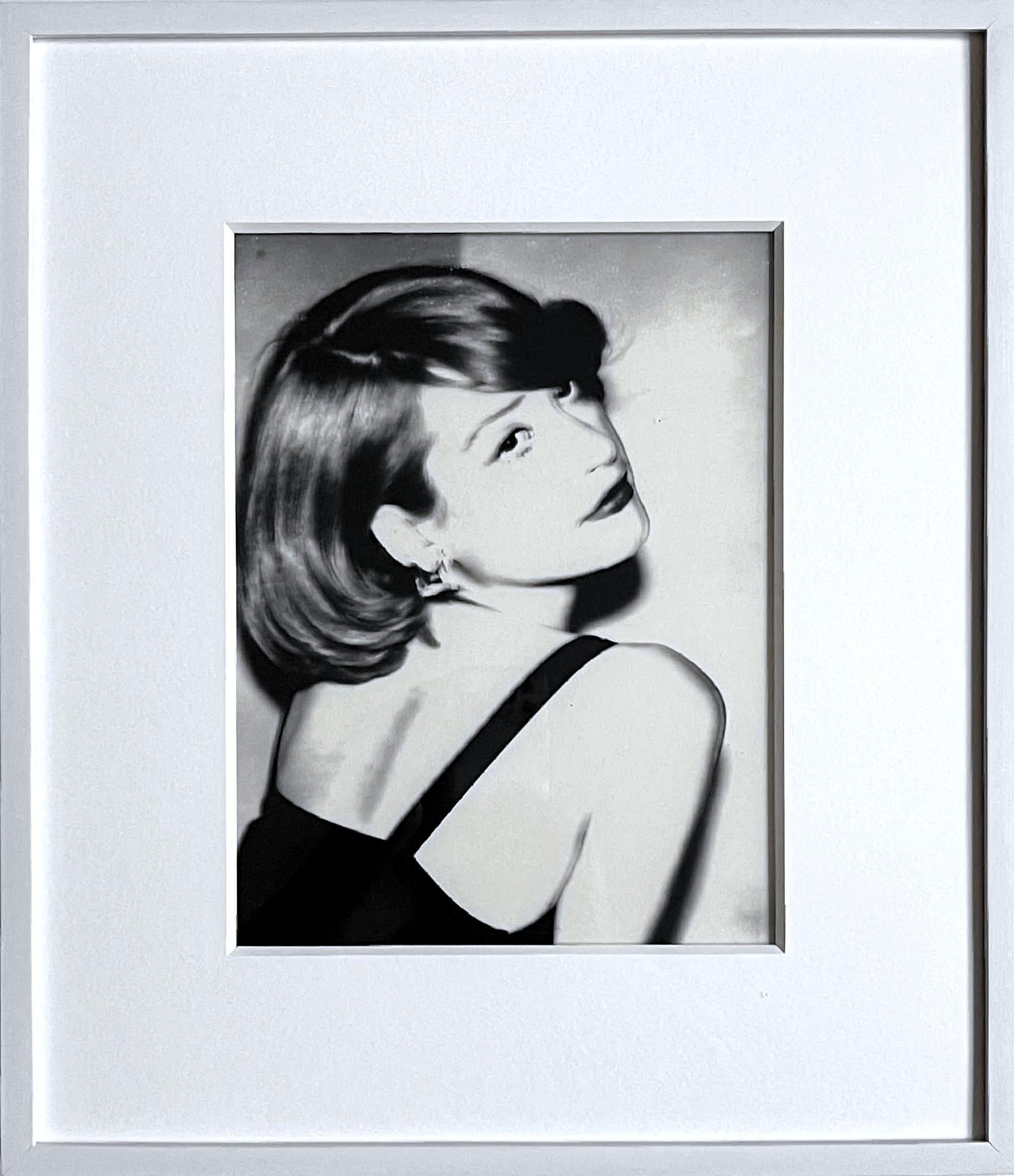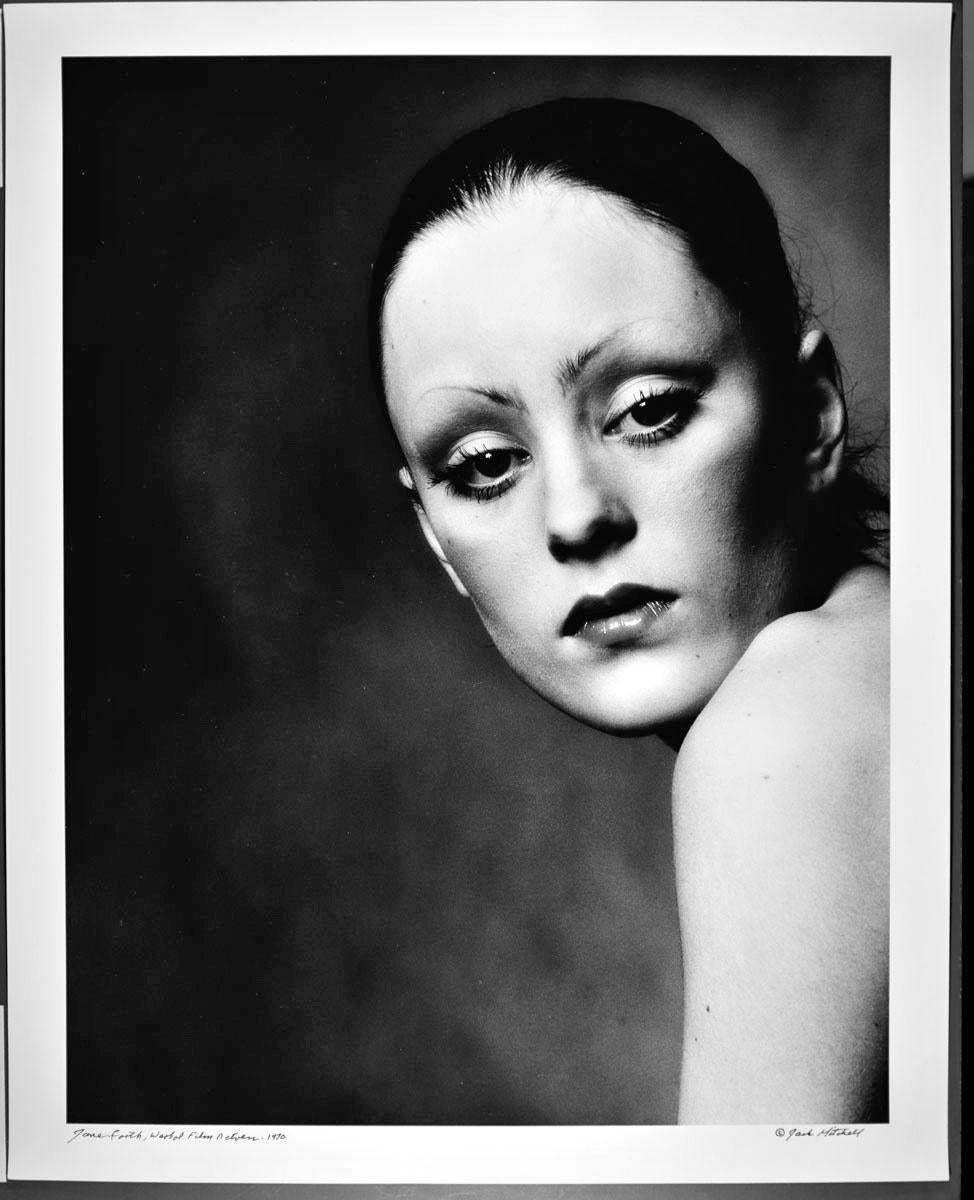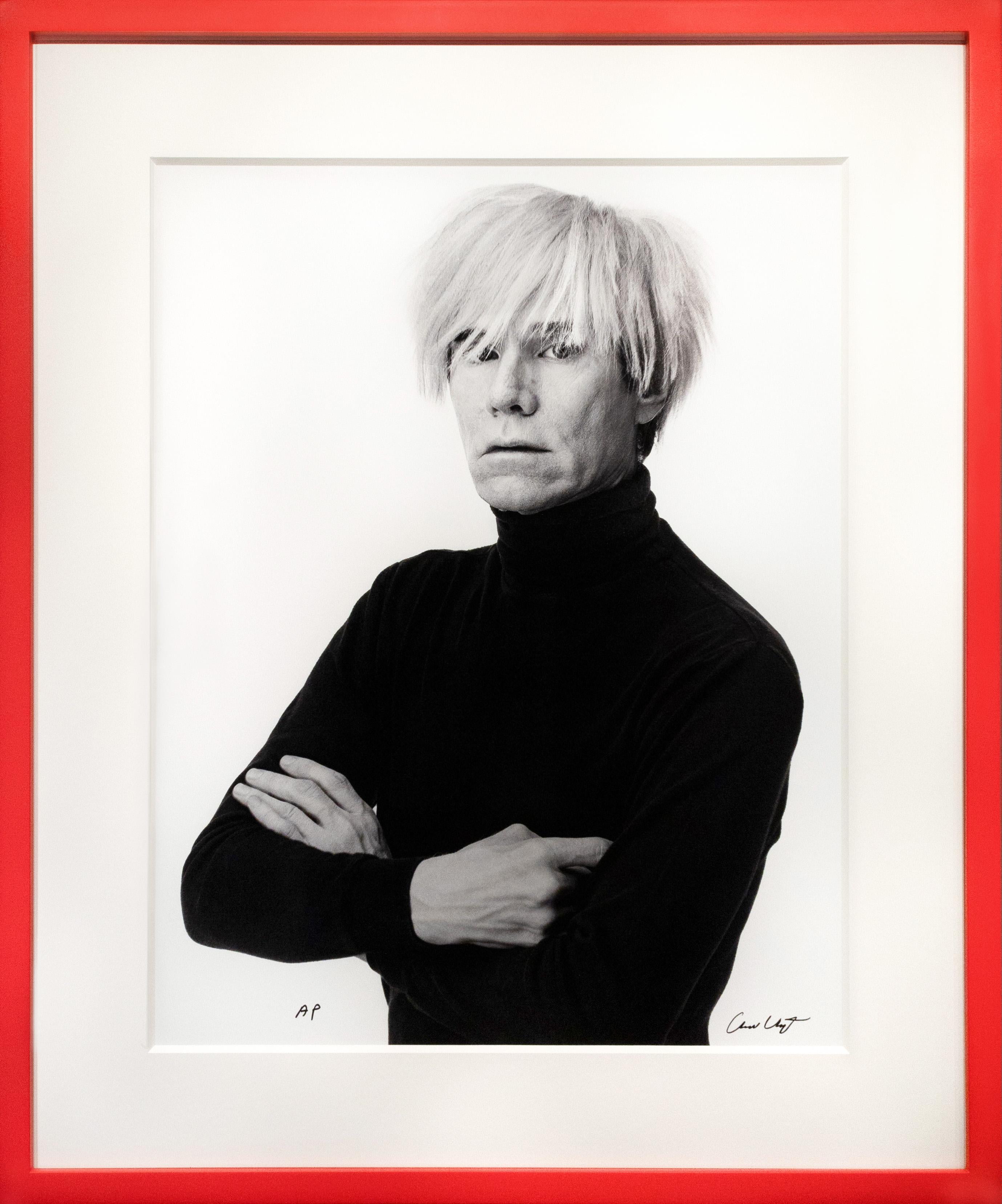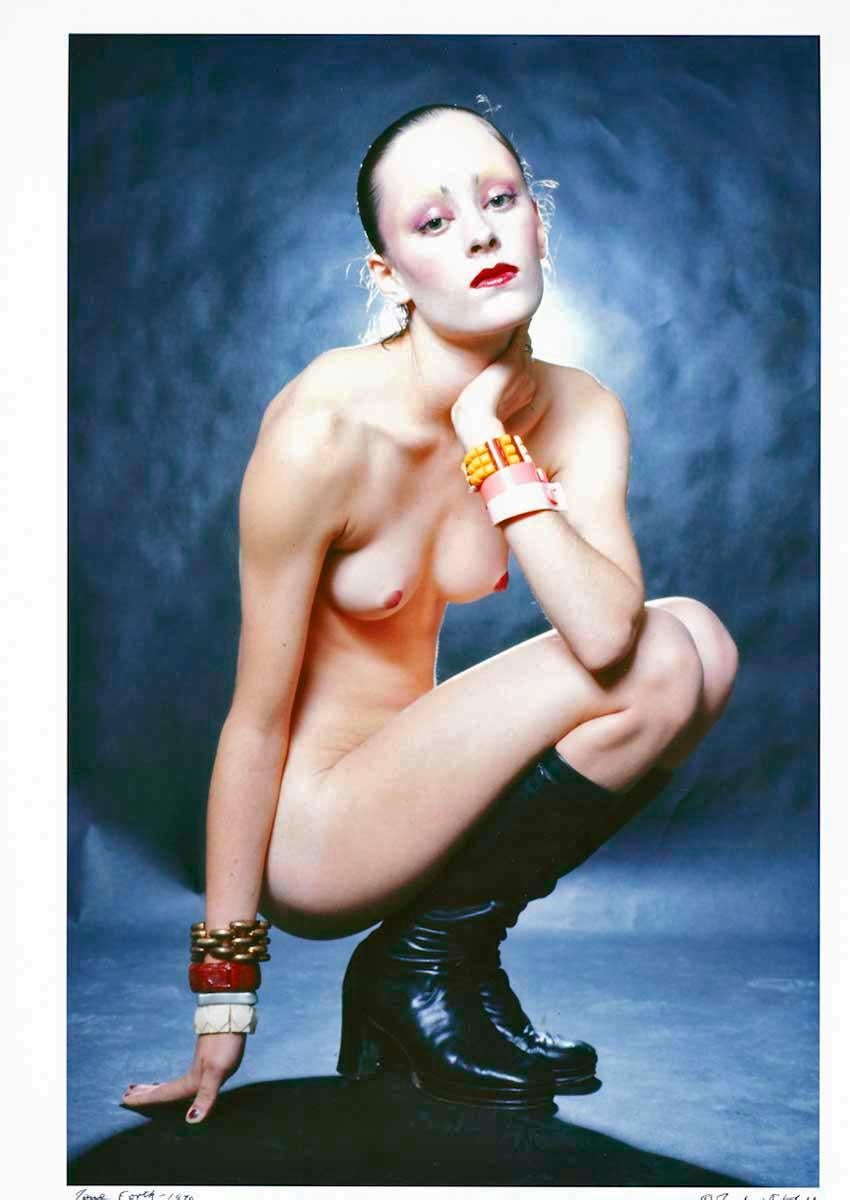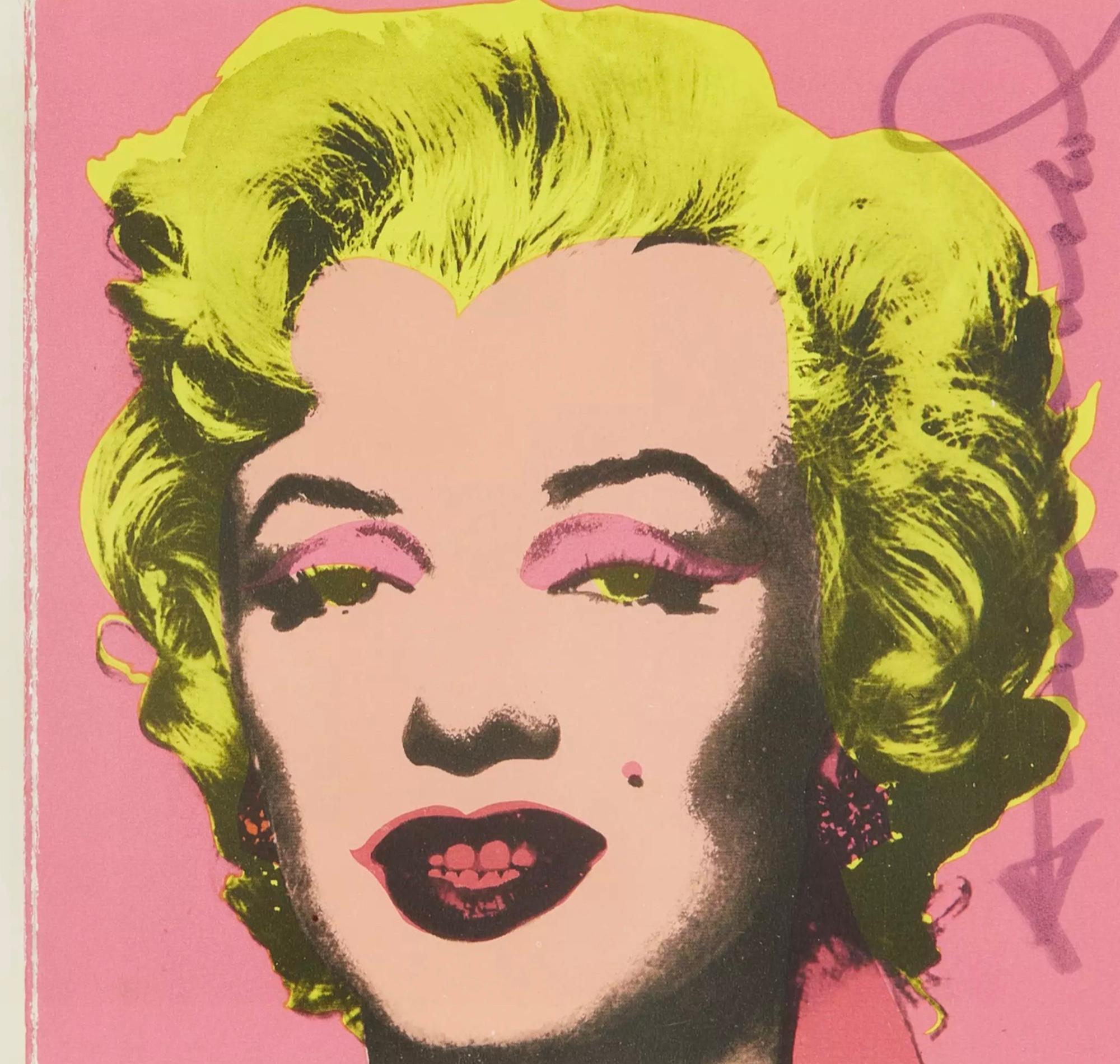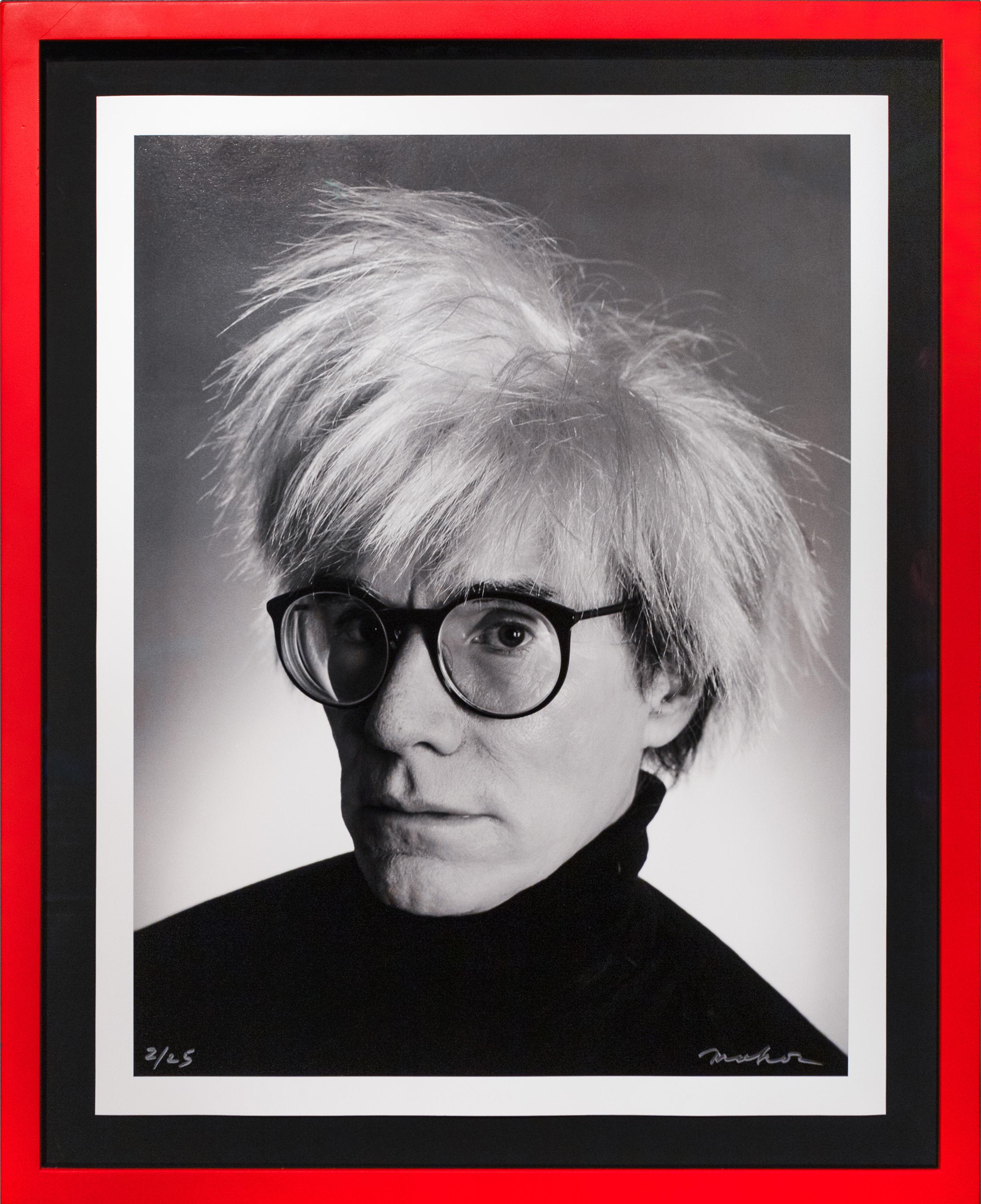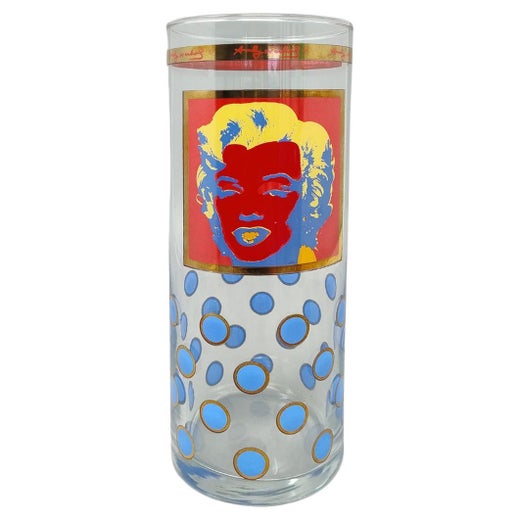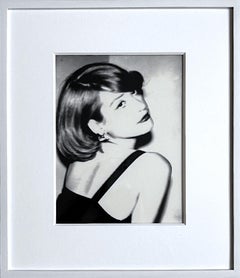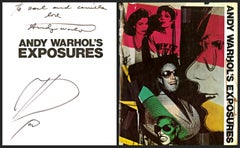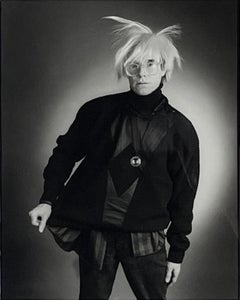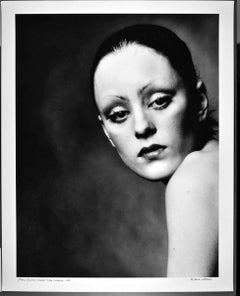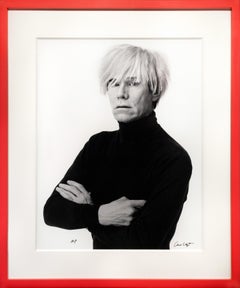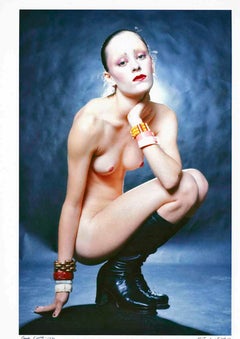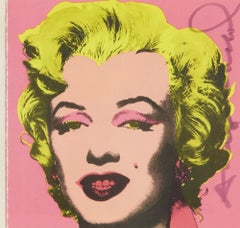Andy Warhol
Baroness de Waldner, ca. 1975
Unique Acetate positive
This piece comes with a signed letter of provenance from the representative of Chromacomp, Warhol's printer.
Frame included: This work is framed in a museum quality white wood frame with UV plexiglass.
Measurements:
Frame:
18 x 15.25 x 1.5 inches
Acetate:
11 x 8.25 inches
Exhibition history:
"The Masters Exhibit: Love and Other Stories", Sager Reeves Gallery, Columbia, Missouri, December 2 – January 28, 2023
This original, unique Warhol acetate from the 1970s came directly from Andy Warhol’s studio, and is the only known print in existence of a photograph taken by Andy Warhol, which he would use as part of his silkscreening process. It is from the private collection of Jackson and Eunice Lowell, the founders of the international printing company Chromacomp, Inc. based in New York City. Chromacomp created iconic prints of artists such as Larry Zox, LeRoy Neiman, Robert Natkin, and many other 20th Century artists.
During the 1970s the famous printer Alexander
This work was acquired directly by our gallery from Chromacomp Inc - not an auction or third party. The letter of authenticity is addressed directly to the director.
As a testament to the historical importance of this collection, we have sold Andy Warhol's acetate of Conceptual Artist Joseph Kosuth (from this collection) -- to the artist Joseph Kosuth - himself, that of Baby Jane Holzer to the socialite herself, Jason McCoy to his family, Tina Freeman to her representative and Stavros Niarchos to his family. Acetates from this collection have sold for up to $20,000. This work is the only known Warhol acetate of Baroness de Waldner. This is an original, unique black and white photographic positive acetate taken by Andy Warhol of the beautiful Brazilian socialite and actress Baroness de Waldner. As Bob Colacello, former Editor in Chief of Interview Magazine (and right hand man to Andy Warhol) explained, "Many hands were involved in the rather mechanical silkscreening process.... but only Andy in all the years I knew him, worked on the acetates." An acetate is a photographic negative transferred to a transparency, allowing an image to be magnified and projected onto a screen. As only Andy worked on the acetates, it was the last original step prior to the silkscreening of an image, and the most important element in Warhol's creative process for silkscreening. This acetate was brought by Warhol to Eunice and Jackson Lowell, owners of Chromacomp, a fine art printing studio in New York City, and was acquired directly from the Lowell's private collection. During the 1970s and 1980s, Chromacomp was the premier atelier for fine art limited edition silkscreen prints; indeed, Chromacomp was the largest studio producing fine art prints in the world for artists such as Andy Warhol, Leroy Neiman, Erte, Robert Natkin, Larry Zox and many more. All of the plates were done by hand and in some cases photographically. Famed printer Alexander Heinrici worked for Eunice & Jackson Lowell at Chromacomp and brought Andy Warhol in as an account. Shortly after, Warhol or his workers brought in several boxes of photographs, paper and acetates and asked Jackson Lowell to use his equipment to enlarge certain images or portions of images. Warhol made comments and or changes and asked the Lowells to print some editions; others were printed elsewhere. Chromacomp ended up printing a number of Warhol silkscreens and, most notably, the iconic Mick Jagger series based on the box of photographic acetates, both positives and negatives. The Lowell's allowed the printer to be named as Alexander Heinrici rather than Chromacomp, since Heinrici was the one who brought the account in. Other images were never printed by Chromacomp - they were simply being considered by Warhol. After working with Chromacomp, Warhol left the remaining acetates, including the present work with Eunice and Jackson Lowell. After the Lowells closed the shop, the photographs were packed away where they remained for more than a quarter of a century. Even in his lifetime, it is well documented that Warhol recognized the unique value of the acetates, as he would often exchange them for services with silkscreen shops.
Many of the acetates from the Chromacomp collection have already been acquired by museums, galleries, dealers and collectors around the world, and a number of years back, a selection of acetates originally acquired from our gallery was exhibited, alongside the silkscreens Warhol created from them, at a museum in Naples, Italy.
About Baroness Sylvia de Waldner:
Baroness Sylvia de Waldner (b. 1942, Brazil) is a beautiful Brazilian actress and model married to Baron Francês Gérard de Waldner.
About Andy Warhol:
Isn’t life a series of images that change as they repeat themselves?
—Andy Warhol
Andy Warhol’s (1928–1987) art encapsulates the 1960s through the 1980s in New York. By imitating the familiar aesthetics of mass media, advertising, and celebrity culture, Warhol blurred the boundaries between his work and the world that inspired it, producing images that have become as pervasive as their sources.
Warhol grew up in a working-class suburb of Pittsburgh. His parents were Slovak immigrants, and he was the only member of his family to attend college. He entered the Carnegie Institute of Technology (now Carnegie Mellon University) in 1945, where he majored in pictorial design. After graduation, he moved to New York with fellow student Philip Pearlstein and found steady work as a commercial illustrator at several magazines, including Vogue, Harper’s Bazaar, and the New Yorker. Throughout the 1950s Warhol enjoyed a successful career as a commercial artist, winning several commendations from the Art Directors Club and the American Institute of Graphic Arts. He had his first solo exhibition at the Hugo Gallery in 1952, showing drawings based on the writings of Truman Capote; three years later his work was included in a group show at the Museum of Modern Art for the first time.
The year 1960 marked a turning point in Warhol’s prolific career. He painted his first works based on comics and advertisements, enlarging and transferring the source images onto canvas using a projector. In 1961 Warhol showed these hand-painted works, including Little King (1961) and Saturday’s Popeye (1961), in a window display at the department store Bonwit Teller; in 1962 he painted his famous Campbell’s Soup Cans, thirty-two separate canvases, each depicting a canned soup of a different flavor. Soon after, Warhol began to borrow not only the subject matter of printed media, but the technology as well. Incorporating the silkscreen technique, he created grids of stamps, Coca-Cola bottles, shipping and handling labels, dollar bills, coffee labels, and more, breaking down the images to their basic graphic components.
In 1963 Warhol established a studio on East 47th Street, which became known as the Factory and served as a cultural hub for artists, models, performers, and socialites. His inner circle comprised his Superstars, who played a major role in both his work and his social life. Interested in the production of fame, Warhol began to screen-print images of celebrities and public figures, from Marilyn Monroe and Elvis Presley to Jackie Kennedy and Mao Zedong. Expanding his practice, as well as his cultural influence, he produced records (The Velvet Underground & Nico), started a magazine (Interview), and made avant-garde films, such as Chelsea Girls (1966), Blow Job (1964), and Empire (1964), which have become classics of the underground genre.
Following a close run-in with death when Valerie Solanas shot him in 1968, Warhol entered a more subdued, isolated period, working primarily on a commissioned basis and painting portraits for various patrons, while also revisiting themes from his earlier work. He then began to pursue a new interest in abstraction, first with his Oxidations (1977–78), made by allowing friends and acquaintances to urinate on canvases painted with metallic pigments, and later with his Rorschach (1984) and Camouflage (1986) paintings.
By the early 1980s Warhol was producing work across media with a renewed vigor, hosting half-hour programs on MTV, publishing books, and collaborating with younger artists including Jean-Michel Basquiat, Francesco Clemente, and Keith Haring. His abstract series coincided with large-scale works that looked back at masterpieces by Leonardo da Vinci: he screen-printed images of the Mona Lisa (1503) and created several monumental canvases of The Last Supper (1495–98). Warhol’s ability to seamlessly combine art historical reference, abstract patterns, and mass media set new standards for the role of the artist, permanently blurring the lines between commercial and fine art.
Courtesy of Gagosian Gallery
Publisher:
Andy Warhol, The Factory
Provenance:
This unique acetate print came from Andy Warhol's studio "The Factory" in the mid Seventies. We acquired this directly from the owners of Chromacomp, Inc. Warhol's silkscreen printer, who received it directly from Warhol, so provenance is superb. This piece comes with a signed letter of provenance.
